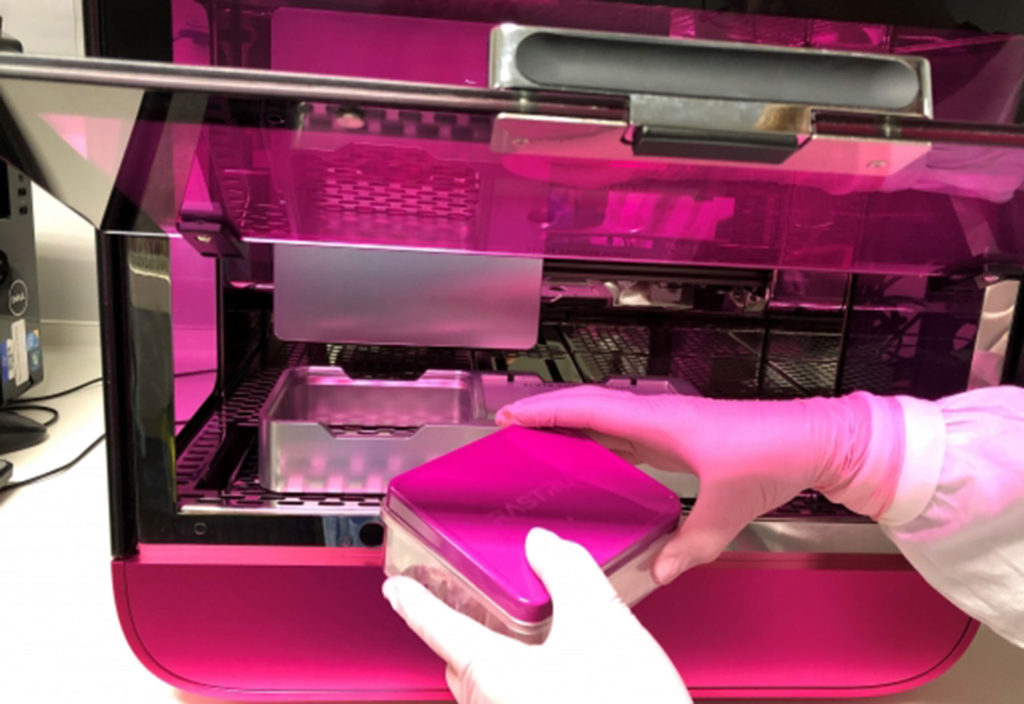A world-first 3D bioprinter with the ability to replicate the structure of cancer cells has been awarded the 2019 Good Design Award of the Year.
A collaboration between biomedical startup Inventia Life and the Australian Centre for Nanomedicine (ACN) at University of New South Wales (UNSW) beat out 60 competitors to win the prestigious design award.
Their 3D printer, named Rastrum, places individual cell types and matrix components drop-by-drop and layer-by-layer to build a 3D replica of cancer cells, similar to an inkjet printer depositing coloured pixels. According to Professor Justin Gooding, a co-director at ACN and professor of chemistry, this technique opens new avenues for finding effective treatments for different types of cancers.
Cancer research is dominated – and limited – by 2D in-vitro cell culture techniques, he said. But 3D printing cell cultures allows for more realistic portrayals, which can help researchers uncover features like resistance to treatment.
So how does it actually work?
According to Gooding, this printer is different to other 3D bioprinting technology as it allows cancer researchers to produce 3D cultures and build in-vitro cancer models rapidly and with more complexity than ever before.
The printer gives scientists precise control over the types of cells and the environment they grow in, allowing them to print artificial tumours and test thousands of treatment drugs.
“The type of ink developed for the printer means cell biologists for the first time have the capability to precisely deposit multiple cell types in a single 3D cell culture,” Gooding said.
He added they will also be able to control the proteins that bind cells together, which is critical as it allows cancer researchers to better understand the variables in cancer formation.
The cell biology behind the printer was created by Professor Maria Kavallaris, a co-director at the ANC. She was instrumental in developing accurate tumour-like environments and analysing the viability of the cells.
Kavallaris said this machine is the only bioprinting technology that can model cancer diseases and therapeutic responses, and it gives researchers a more accurate understanding of how tumours might respond to different treatments by placing them in context.
“It gives us enormous opportunities to model real cancer cells,” she said.
“Different tumours survive in different microenvironments – a person doesn’t just have a tumour, but many other cells such as immune cells and accessory cells – living around that tumour that influence that environment and response to therapy.”
Future steps
At this stage, the printer can recreate and mimic solid tumours. Eventually, its developers hope it will have the potential to recreate blood cell cancers, such as leukaemia.
Kavallaris said it is an amazing starting point for researchers to be able to use their imagination to study diseases by developing cell models.
“We can analyse the ways drugs are impacting the survival of the tumour and potentially feed that back to clinicians – even test drugs they may not have thought about giving and reduce exposing patients to undue toxicity,” she said.
